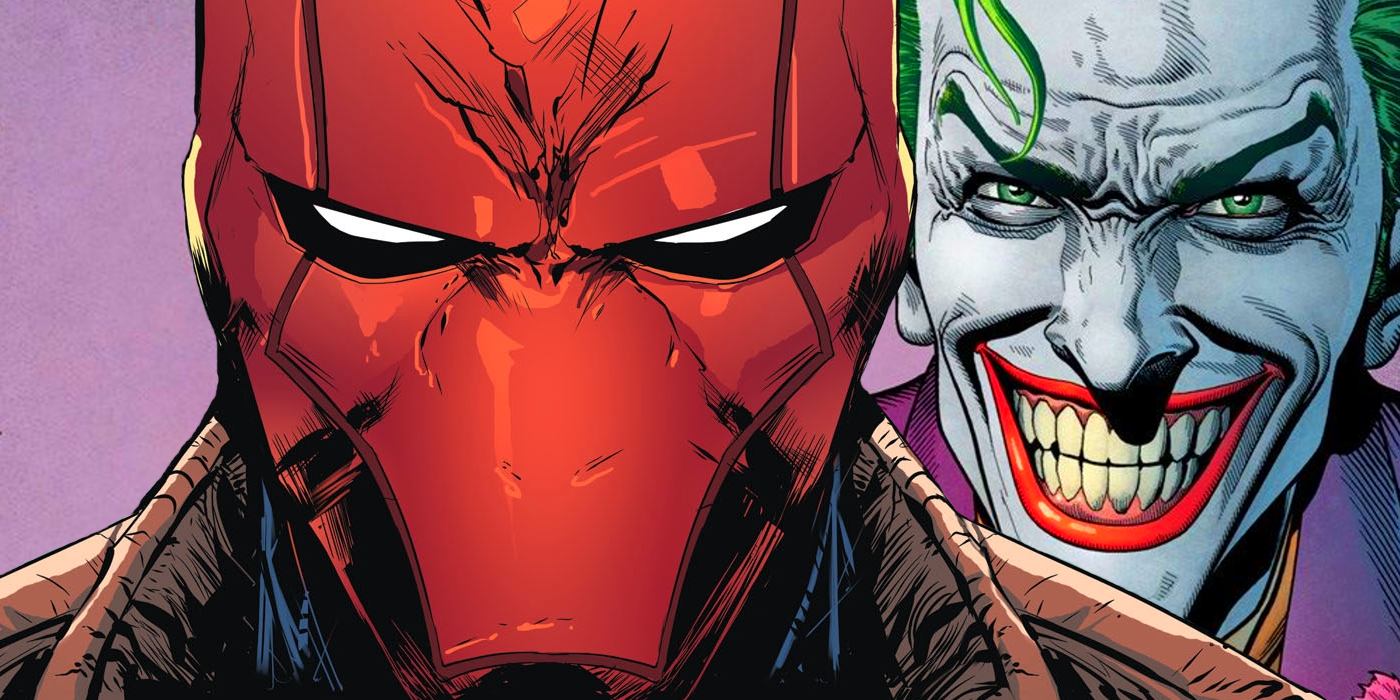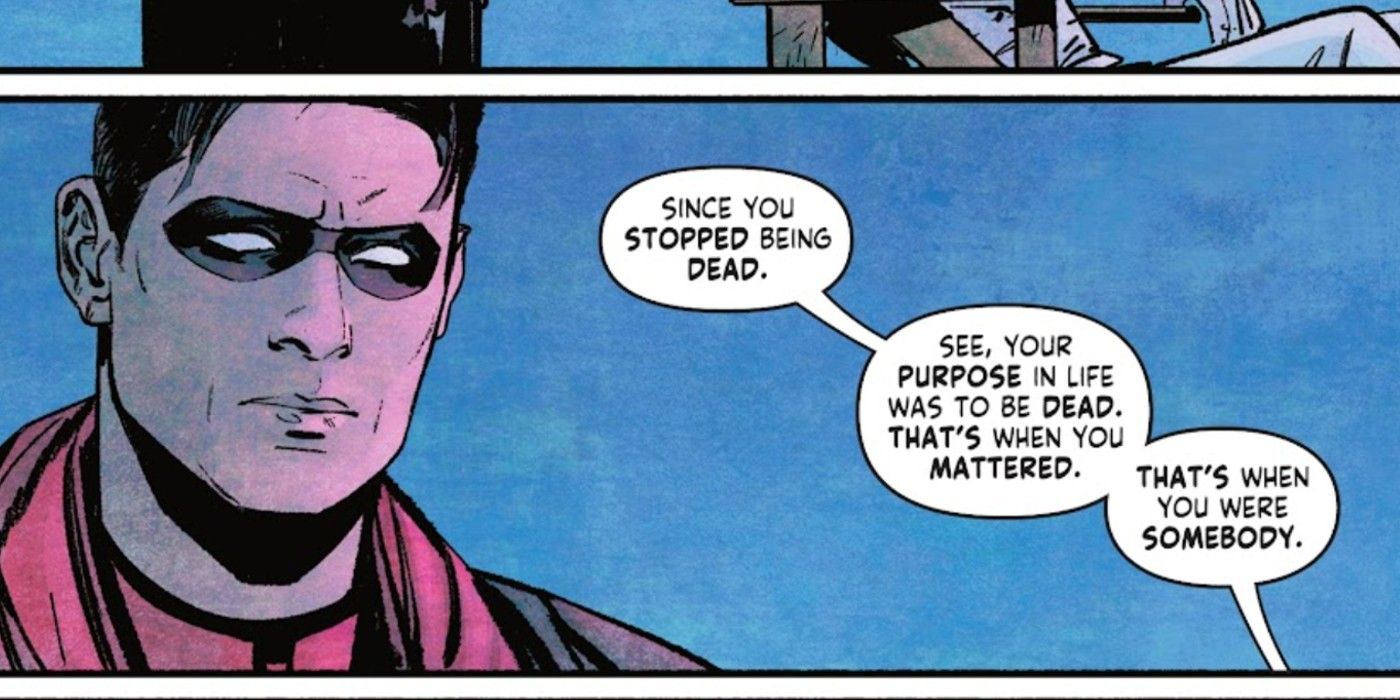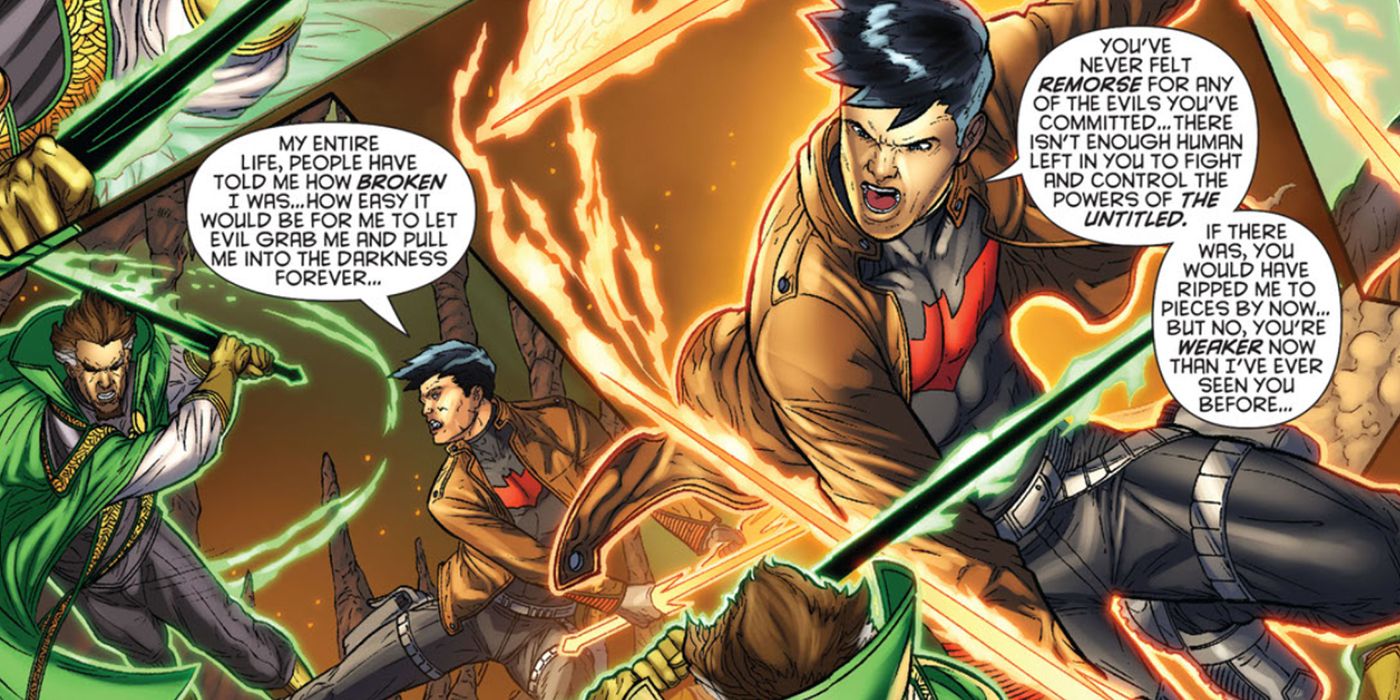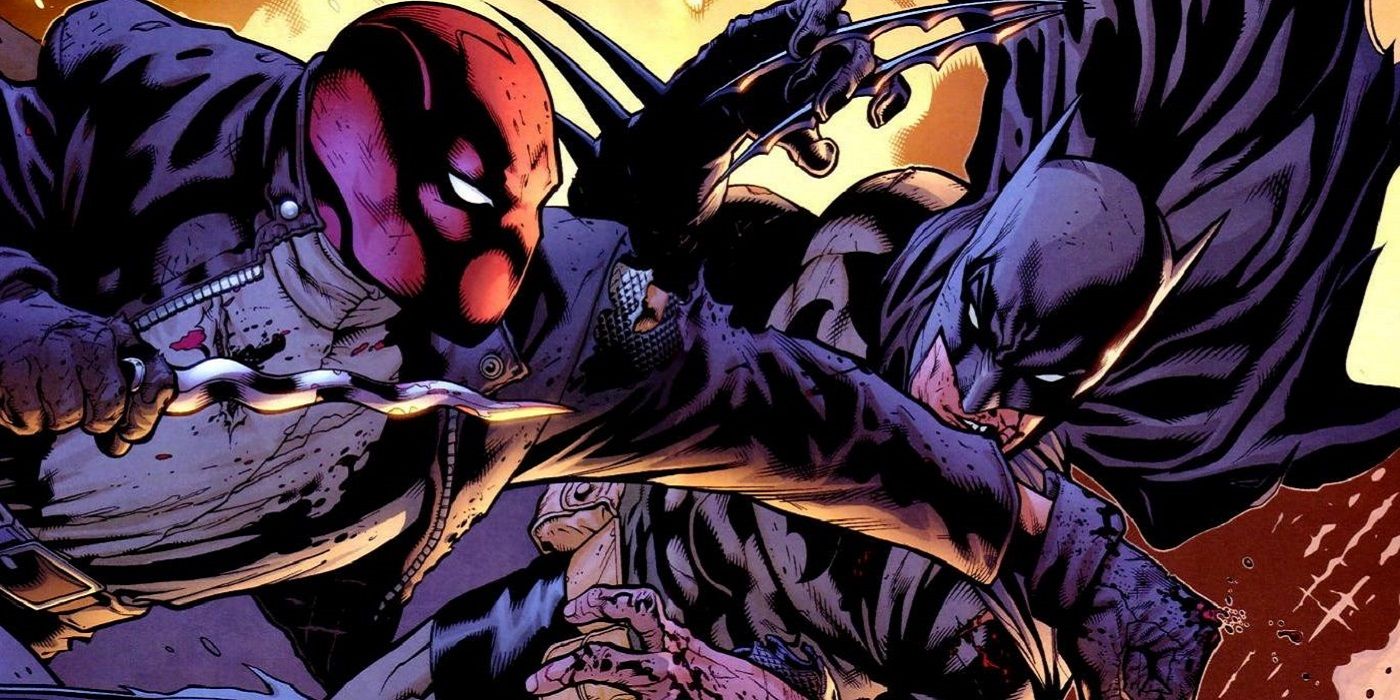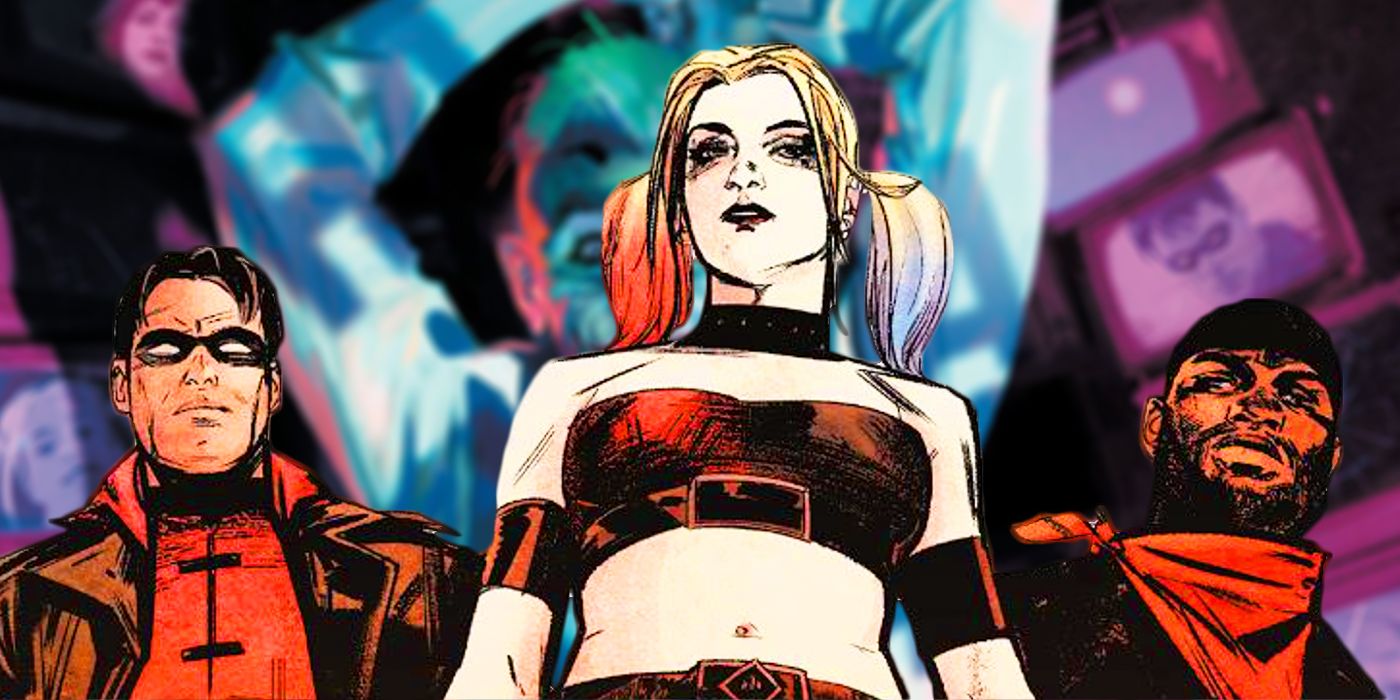Warning: This article contains discussions of suicide and spoilers for Suicide Squad: Get Joker! #3.
Jason Todd's arc as Red Hood in DC Comics is one of the most dramatic for any character in the Bat-Family. Reclaiming an old alias used by the Joker, Red Hood introduced a level of brutal violence that the Bat-Family had long avoided, initially making him a villain. But as his relationship with Batman mended over the years, Red Hood has become a necessary voice countering the contradictory aspects of Batman's moral code. If there is anyone today that would call Batman out on his shortcomings, it is Jason Todd.
As Batman's second Robin, Jason was famously killed by the Joker in 1988's A Death of the Family storyline by Jim Starlin and Jim Aparo. Jason's death as Robin drastically altered the course of Batman's publication history, and was emblematic of the dark tenor that hung over many comics in the 1980s. His return decades later as the brutal vigilante Red Hood pushed Batman's character to new territory, as Bruce Wayne was forced to reckon with his past failures as a father, mentor, and superhero. Now, as a committed member of the Bat-Family, Red Hood is poised to finally move out from the shadow of his death as Robin, which makes his characterization in Suicide Squad: Get Joker! all the more troubling.
Despite the fact that A Death in the Family was released almost thirty-five years ago, Jason's death at the hands of the Joker continues to define his character in the eyes of some writers, apparent in the Black Label miniseries, Suicide Squad: Get Joker! The miniseries details a version of Task Force X led by Red Hood as they embark on a mission to find and kill the Joker. In contrast to his stories in current DC continuity with Batman: Urban Legends and Task Force Z series, Suicide Squad: Get Joker! as its title suggests, bases Jason's characterization entirely in his Joker victimhood. At the end of the third issue by Brian Azzarello and Alex Maleev, the Joker tells Red Hood that he only mattered when he was dead, urging him to end his own life. The issue ends on an ambiguous note, with readers left unclear whether or not Jason killed himself or the Joker.
Tragedy is often used as a starting point for characters in comics: the destruction of Superman's home planet of Krypton is the ultimate example of this. And while Jason Todd's death is a significant part of his character's arc, it would be incomplete to say that it is the only event of note. Jason's arc begins in victimhood, but is later defined by personal agency once he adopts the Red Hood persona, a fact that Get Joker! ignores in order to remind readers that the Joker is a terrible person. By seeing Jason Todd purely as a victim, Get Joker! omits the most empowering part about his character: his refusal to be defined by the worst thing that's ever happened to him. It is this piece that makes Red Hood such a key element to the Bat-Family and DC Universe as a whole: he illustrates the agency that survivors have in overcoming their trauma. As such, Suicide Squad: Get Joker! comes across as deeply retrograde because it ignores everything that happened to Jason Todd's character after 1988.
Red Hood Is An Expression of Jason Todd's Agency.
The Joker's statement that Red Hood only mattered when he was dead fails to understand the two chapters in Jason Todd's arc as a character: victimhood and agency. For Jason, becoming the vigilante Red Hood after his resurrection was a powerful act of self-determination, as he reclaimed a former alias of the Joker for his own purposes: to protect people on his own terms. As delineated in the "Under the Hood" Batman storyline from Judd Winick, Doug Mahnke, Shane Davis, Eric Battle, and Paul Lee, Jason's use of lethal force and guns while crimefighting was a rejection of Batman's rigid moral code just as much as it was a refusal to let Gotham's criminals go unpunished. In adopting the Red Hood persona, Jason chose neither to become a more "respectable" vigilante like Batman or Nightwing, nor become a cruel villain like the Joker, and this decision defines his character's complexity in comics today.
As such, Red Hood's character is incompatible with the themes of Suicide Squad: Get Joker! because the story repeatedly undercuts the agency at the center of Jason's character. While Suicide Squad: Get Joker! takes place out of DC's current continuity, it is difficult to believe that a character as angry and bitter as Jason Todd would voluntarily listen to anyone talking about his self-worth, much less the Joker. To put it in perspective, Red Hood fought and defeated Ra's al Ghul in a Lazarus Pit with weapons drawing power from his own soul in order to prove to his foe that he wasn't "broken" like everyone said he was.
Red Hood's Actions Counter How Victims Are Portrayed In Comics.
Beyond providing the basis for his vigilante persona, Jason Todd's agency powerfully subverts the ways that victims and survivors are often portrayed in comics. His commitment to making his own decisions pushes back on Batman's impulse to safely sanctify victims, introducing a level of moral complexity that provides a nuanced view on how violence shapes the course of one's life. In contrast to other characters in Batman's life, Jason Todd seeks action, rather than memorialization, in response to the violence he has faced. Being killed by the Joker forced him into a passive role in DC Comics, but being resurrected as Red Hood gave Jason Todd the chance to define himself on his own terms. In a genre plagued by tropes such as "fridging," Jason Todd's arc provides an alternate way for victims to determine their identities beyond their own trauma.
Red Hood's decision to forge his own path beyond the Joker challenges what is expected of victims such as himself, and lays the groundwork for his development as a complex character. As much as Red Hood's agency has helped him discover who he wants to be, it has also led him to do some terrible things, a fact explored to heartbreaking effect in the "Cheer" storyline in Batman: Urban Legends from Chip Zdarsky, Eber Ferreira, and Eddy Barrows. In effect, this trait plays an important role in defining Jason Todd's humanity as a character.
In comparison to other members of the Bat-Family, Red Hood is not as concerned with conforming to a heroic ideal. As a character who has had more than his fair share of difficulties in life, he will never achieve the same type of aspirational status as Nightwing or Tim Drake. Even so, Jason Todd's arc as a character is deeply empowering in its exploration of the tensions underlying a survivor's search for themselves in the aftermath of their darkest moment.
Ultimately, this is what makes Red Hood's appearance in Suicide Squad: Get Joker! so disappointing. The journey that the character has been on for the past seventeen years was disregarded in order to return to a status quo from 1988. Red Hood's character has painstakingly proved how survivors of violence do not have to be defined by their pasts, but it is clear that Suicide Squad: Get Joker! was more concerned with recreating the spectacle of the Joker's cruelty than reflecting the current world of comics.
Suicide Squad: Get Joker! #3 is now available from DC Comics.

